by Todd Rutherford
June is finally here, which gets me thinking about cactus flowers. I wanted to share these photos I took of a gorgeous flowering cactus that was growing in a park called Kendrick Lake Park, located in Lakewood, Colorado.
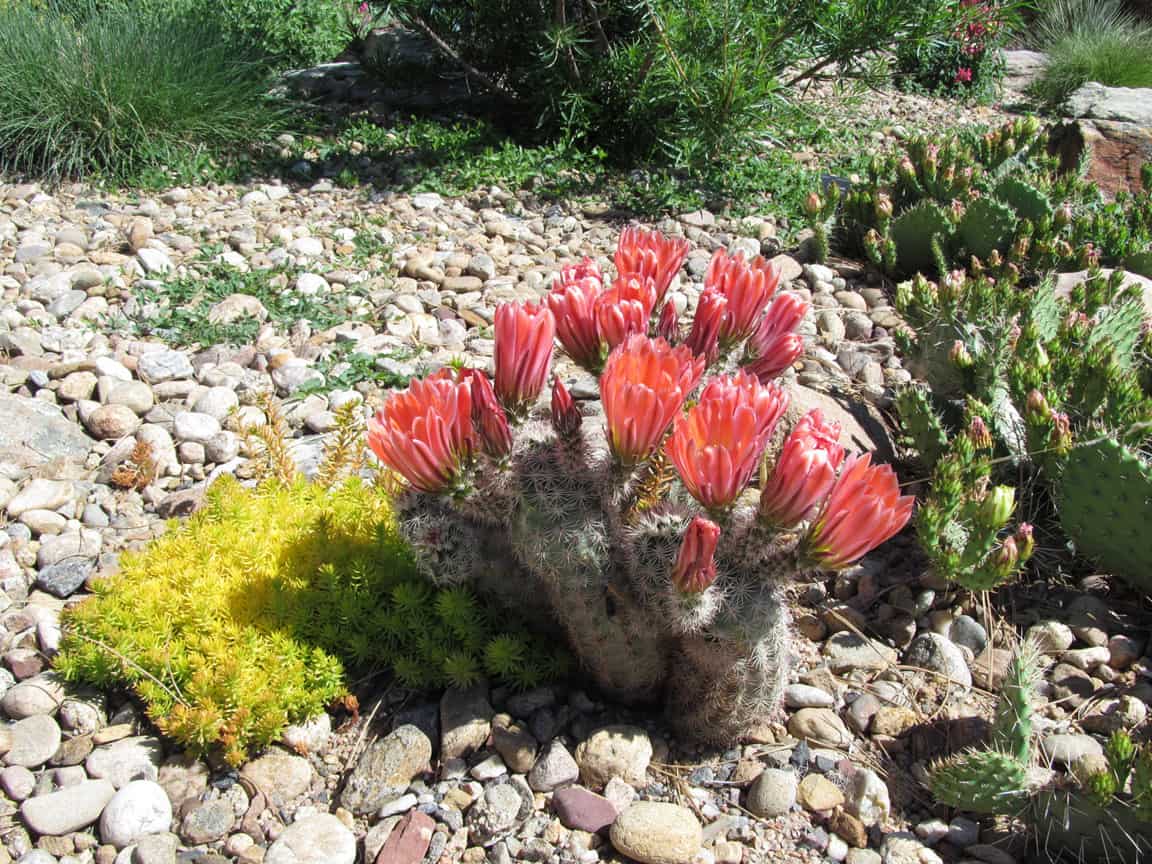
The xeriscape gardens at Kendrick Lake are quite impressive. June is a good time to visit for the chance to see the various cacti that dot the gardens, blooming in their early summer glory. On an interesting botanical note, I recently learned from cactus expert Kelly Grummon’s website (coldhardycactus.com) that in order for these cacti to bloom, one of the criteria is a cold enough winter. “If a cactus doesn’t get enough cold weather, it will not flower normally in the spring”, he says.
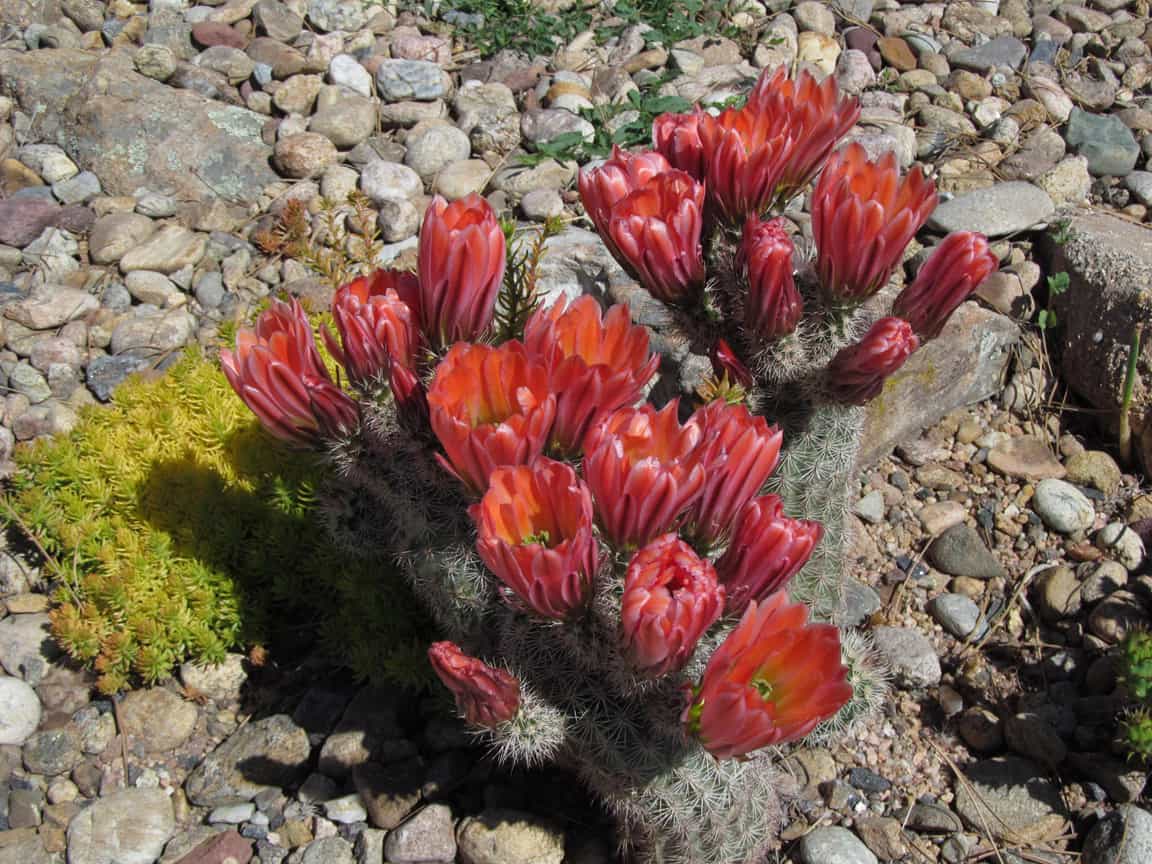
At first I thought the cactus in these photos was Echinocereus ‘White Sands’. But upon further inspection of the flower color and the size and density of the spines, I am guessing it might possibly be some variety of Echinocereus reichenbachii. Whatever species of cactus it happens to be, it is stunning to see it when blooming.
I recommend visiting Kendrick Lake in June to enjoy the cactus blooms, as well as many other stunning flowering xeriscape plants on display.
This is the official blog of Outdoor Design Group, Colorado Landscape Architects. For more information about our business and our services, click here.
Related Posts:
by Todd Rutherford
A few months ago, on a trip through New Mexico, I stopped by Ghost Ranch for a short visit and hike. Ghost Ranch is a beautiful area in north central New Mexico. It is a retreat and education center that belongs to the Presbyterian Church, but is open to the general public (all visitors must register with the visitor center). Though there is a long history to the Ranch, perhaps it has become most well known due to its links with the artist Georgia O’Keeffe, who once owned a home on a small portion of the Ranch.
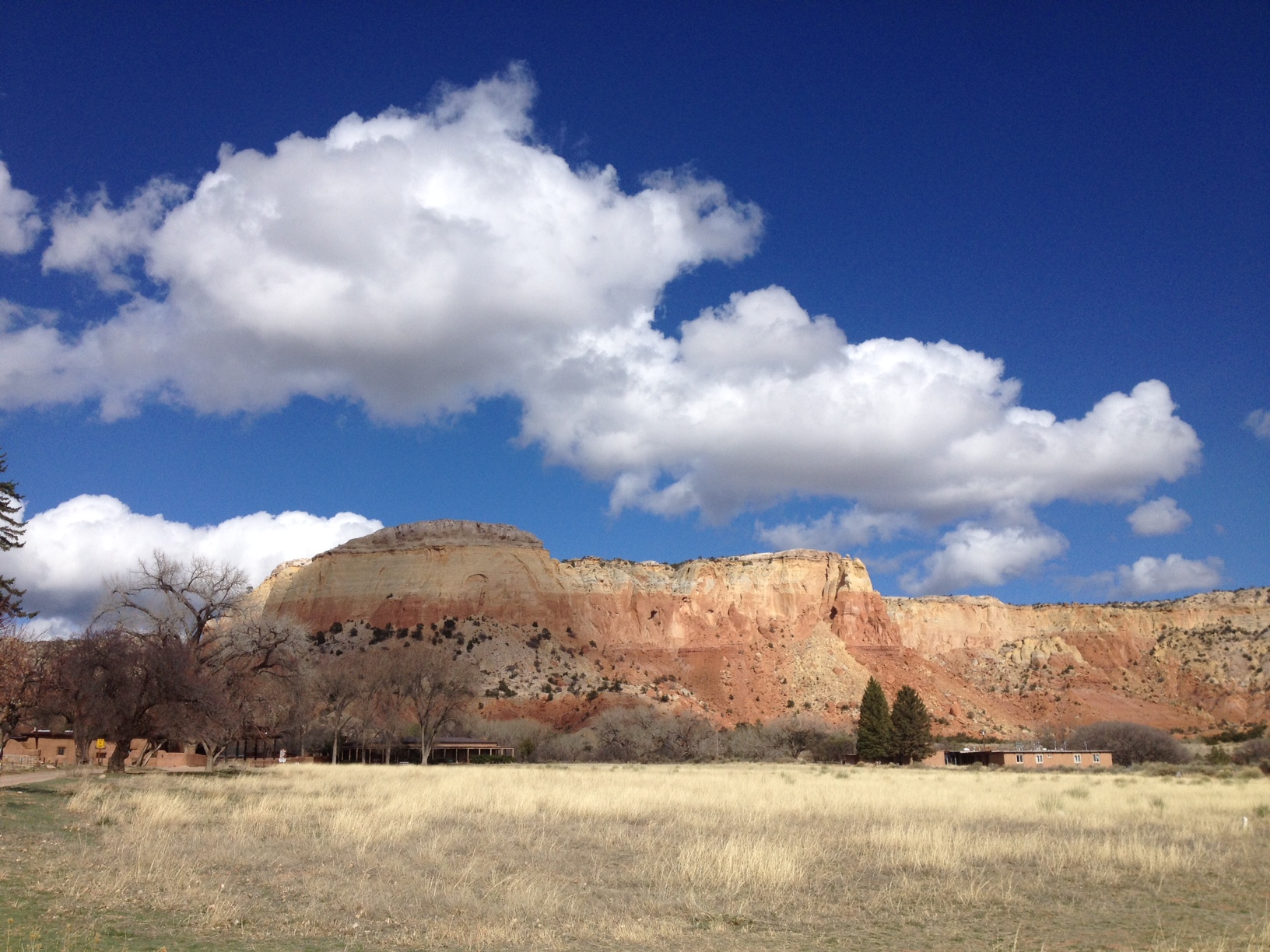
Near the Ghost Ranch Visitors Center.
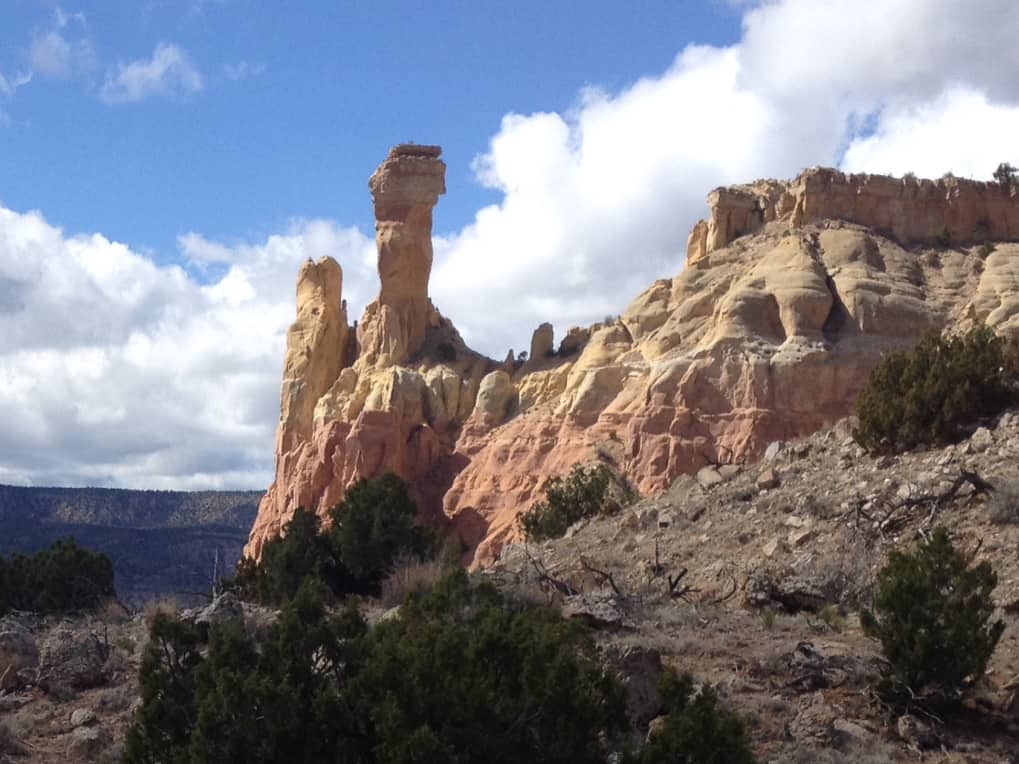
Chimney Rock
There is an easy and rather popular hike to a rock formation called Chimney Rock, not far from the Ghost Ranch Welcome Center. As I ambled along the trail to Chimney Rock on that cool and windy Spring day, I was delighted to come across what I believe to be Yucca harrimaniae, occasionally dotting the sides of the trail. This small and very charming yucca was quite numerous on areas along the hike.
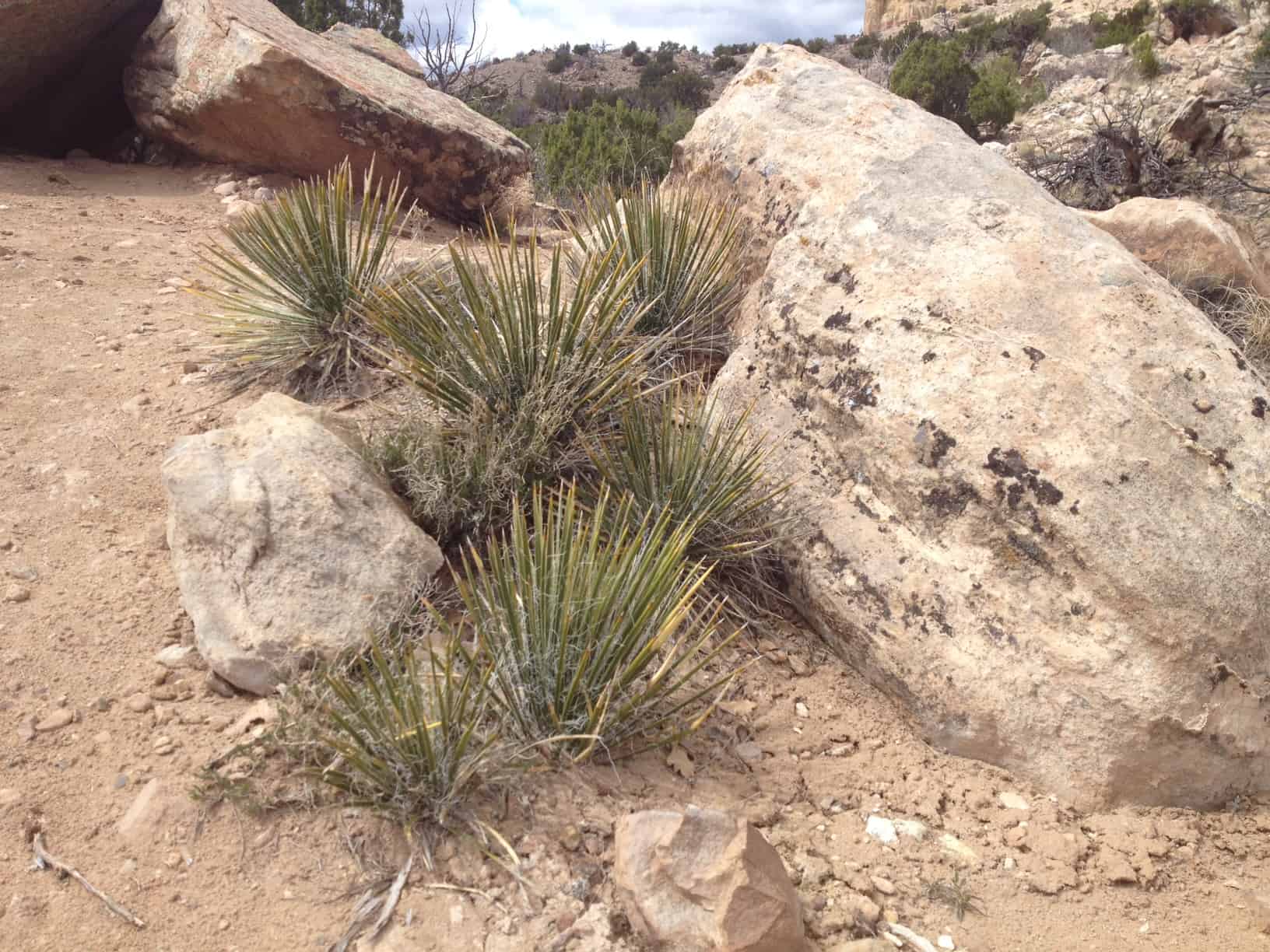
Cluster of Yucca harrimaniae (or are they Yucca angustissima?)
In the limited research I did, I discovered that there is also a possibility that the yuccas I saw at Ghost Ranch might also be Yucca angustissima. And it seems that there is disagreement among botanist about these two species of Yucca, and what distinguishes them. For the sake of simplicity, and at the risk of being wrong, I will refer to these yuccas as Yucca harrimaniae. Some people call Yucca harrimaniae by the common name Harriman’s Narrow Leaf Yucca.
I have seen these in the Denver area, planted in gardens, but I had never before noticed them in the wild, as I am usually accustomed to only seeing Yucca glauca, which is quite common in natural areas of northern and eastern Colorado. That is why I was so excited to see them. The Yucca harrimaniae leaf color is less blue-grey than Yucca glauca (glauca or glaucous translates to “blue-grey” in Latin), and I think Y. harrimaniae exhibits more of the curly white “side hairs” than the Y. glauca. Like all other yuccas, these will sport a beautiful flower stalk in spring to early summer.
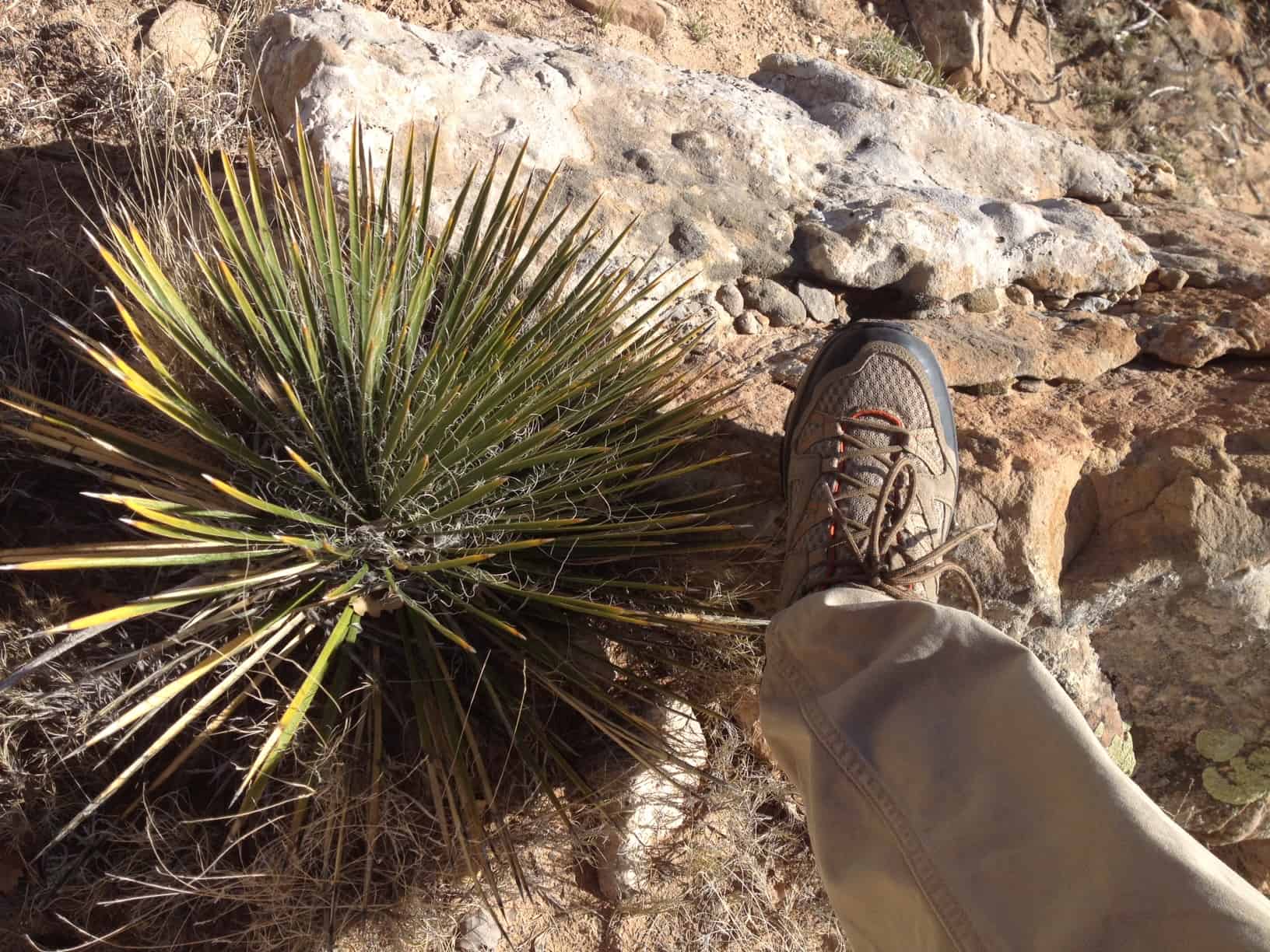
My 11″ shoe as a size comparison.
This is the official blog of Outdoor Design Group, Colorado Landscape Architects. For more information about our business and our services, click here.
Related Posts:
by Todd Rutherford
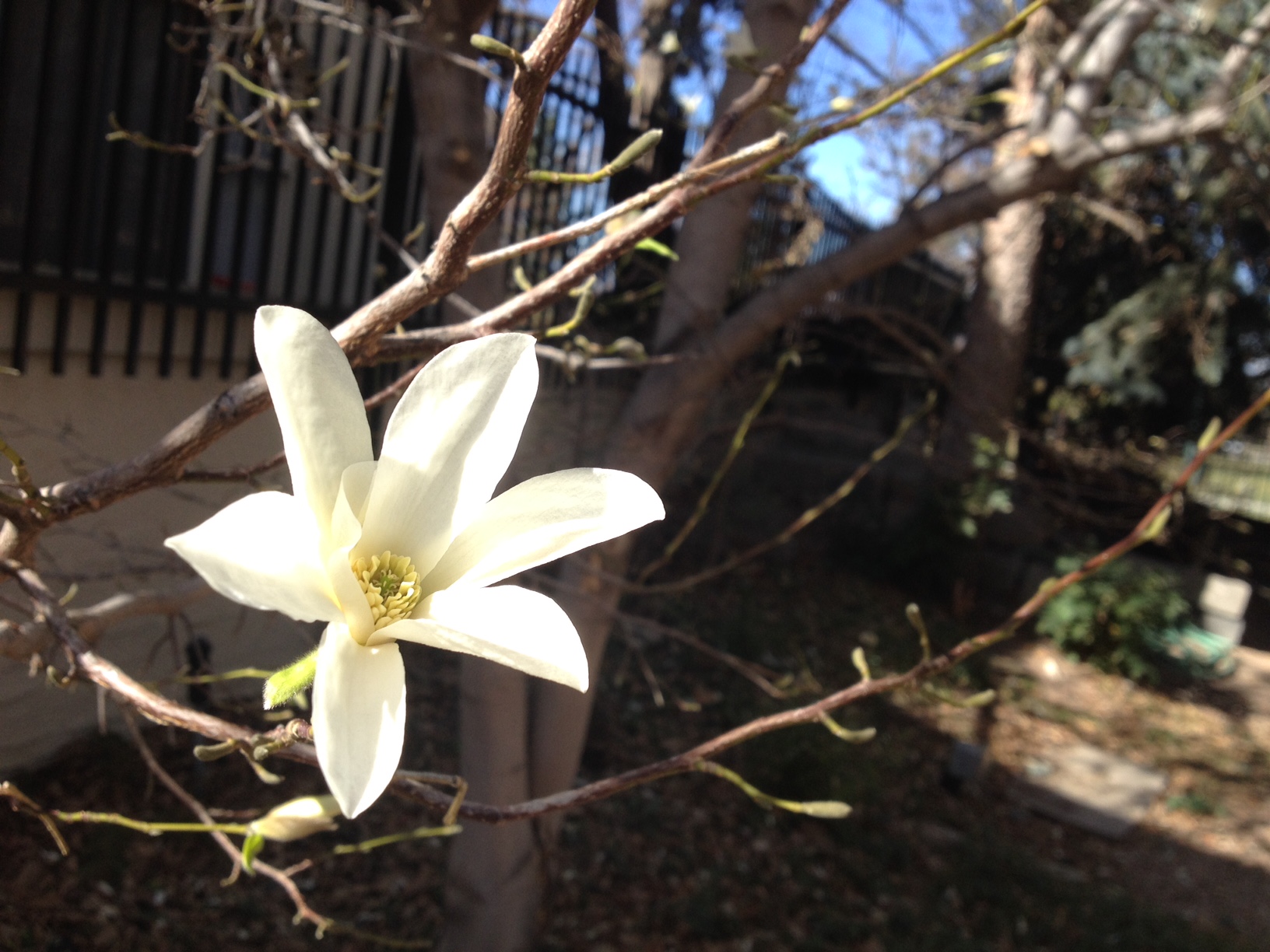
As Denver slips into a typical high plains spring weather pattern of sloppy snow storms interspersed with breezy sunshiny days, I wanted to share these recent photos of a magnificent magnolia at the Denver Botanic Gardens. This particular variety of magnolia packs a double punch of gorgeous silky blooms, which also emit an intoxicating scent. I’d describe the scent as a mixture of citrus and rose. Amazing!
This particular magnolia is called a Yulan or Jade Lily magnolia (scientific name: Magnolia denudata). It is native to China, and has been grown in Chinese Buddhist temples for more than a thousand years. The Magnolia is an ancient genus, appearing before bees did. Botanists have theorized that magnolias evolved with beetles as their main pollinators.
I’m enjoying these pictures as the rain is slowly turning to snow outside my window, with the thought that those wonderful magnolia flowers may perish if the snow gets too heavy or if the temperature drops much below freezing. Perhaps their fleeting nature makes these magnolia flowers all the more beautiful.
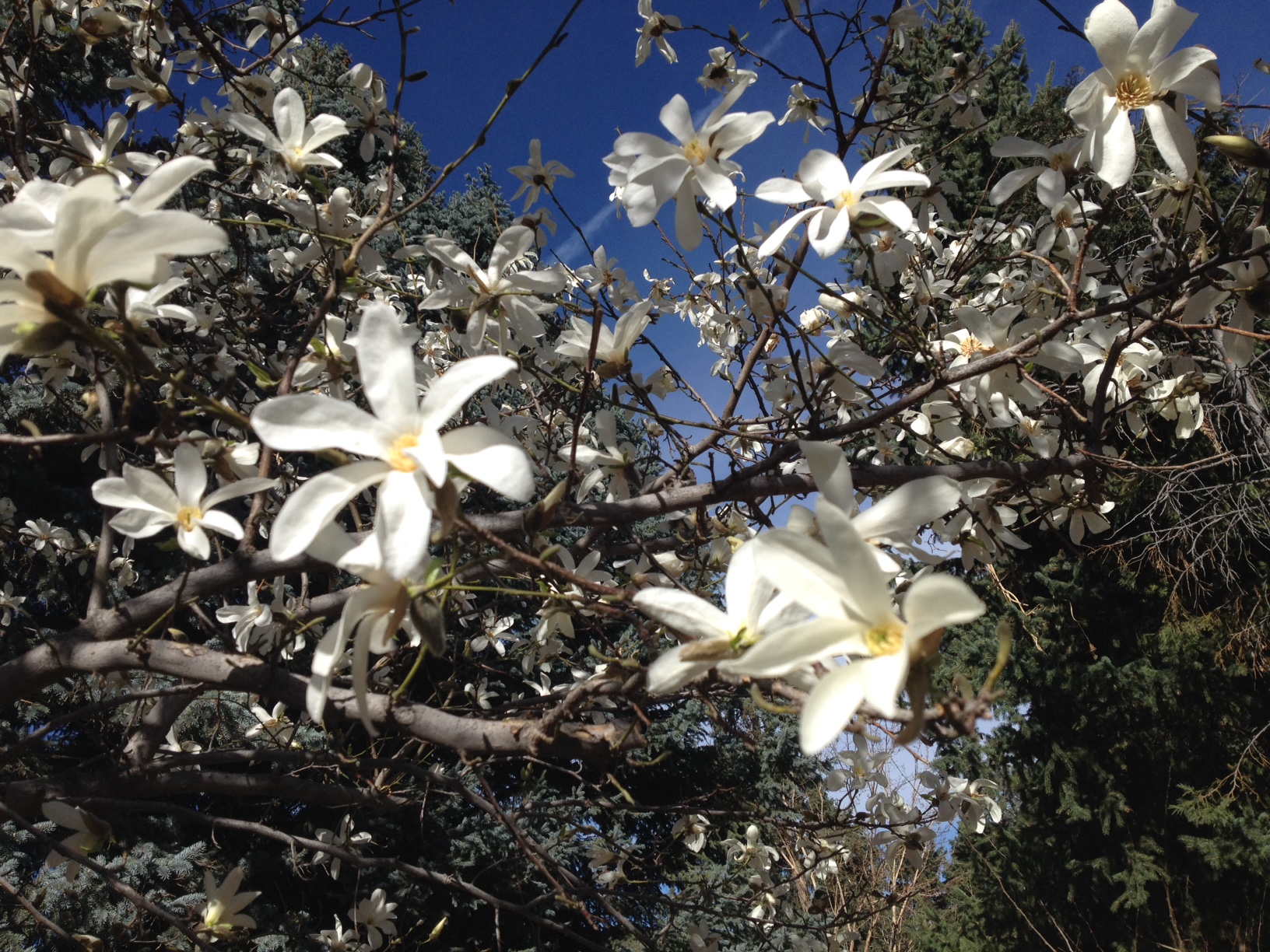
This is the official blog of Outdoor Design Group, Colorado Landscape Architects. For more information about our business and our services, click here.
Related Posts:
by Todd Rutherford
Whether you’re an experienced or an inexperienced gardener, you’re probably aware of fall planted flowering bulbs. Tulips, daffodils, crocus, alliums, hyacinth and other “fall planted/spring blooming bulbs” have become very iconic harbingers of the advent of spring season. However, there’s a large assortment of flowering bulbs that make a spring-time appearance in garden retail stores, providing their own form of welcoming the passing of winter and the arrival of a new gardening season. The so-called spring planted flower bulbs may be lesser known to the novice gardener, but can be almost as valuable as the fall planted bulbs. These summer blooming plants can be used to place spots of color in-between perennials and shrubs in your landscape. Planted in Spring, these bulbs emerge to provide beautiful flowers throughout summer and fall, with exact flowering times varying per species and cultivar.
In fact, the spring planted bulbs are not all true bulbs. Some may be corms, rhizomes or tubers, which are all different types of storage organs that plants have evolved over time. It is these clever little storage devices that have allowed people to dig them up during plant dormancy, and package them up to be shipped to garden center stores around the world. Some of the spring planted bulbs are perennials, but most are not, at least in the USDA hardiness zone that Denver finds itself in.
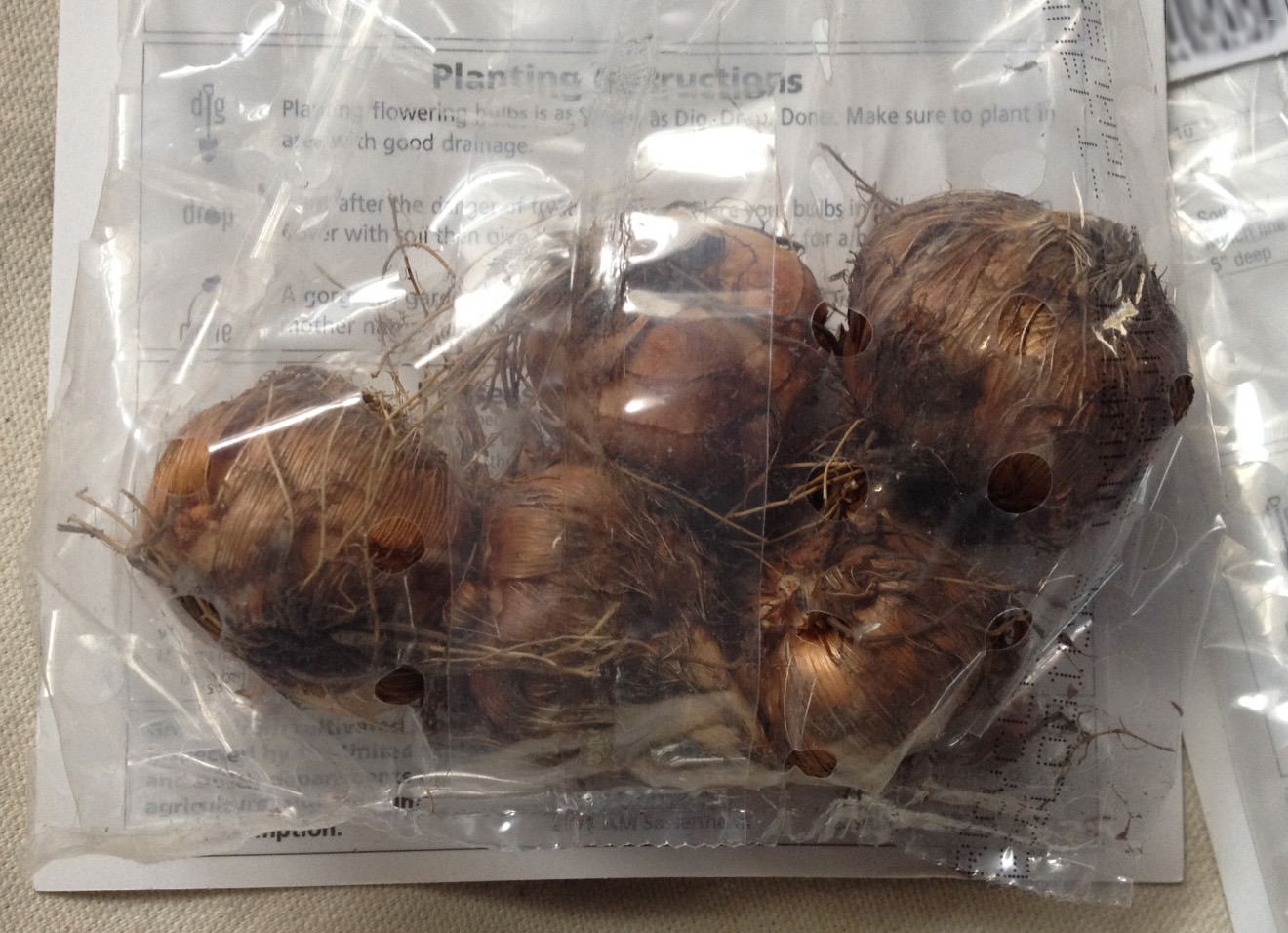
Crocosmia corms.
Out of the many types of spring planted ornamental bulbous plants available in your local garden center, I cover three common types here in this post.
Perhaps the best known spring planted bulb is the gladiolus, which hails from South Africa. Botanists consider the gladioli to actually be corms, not true bulbs. Corms are underground plant stems that function as storage organs, whereas true bulbs are underground storage organs made up of layers of fleshy modified leaves. Most gladioli are hardy only to zone 8, which makes them annuals in Colorado. But there are some gladioli that are hardy to zone 5, if well mulched in winter. Gladioli come in many colors and sport bright blooms on upright stems with strap-like leaves.
Like the “glads”, dahlias are another very popular summer bloom that is not hardy in Colorado. Dahlias are placed in the spring planted bulb category because they form tuberous roots which are dried and then sold. The pre-cultivar dahlias are native to Mexico. There tubers were used as a food crop by the Aztecs. The trick to buying dahlias in dry form is that they must have a stem attached to the tubers, because only the stems produce buds, which then produce stems and flowers. There is a huge variety of dahlia cultivars to be found in garden centers. In springtime, the dahlia tubers are sold in bags along with the other spring planted bulbs. But in summer it is common to see the dahlias sold as potted plants. Buying them as tubers is cheaper than as potted plants. Because the dahlias are hardy only to zone 8, if you want them to return to your yard next summer you must save the tubers (with a bit of the stems attached) in a cool but not freezing space, to be replanted in a successive season. Or simply just buy new ones each spring. Dahlias are popular because the blooms come in a multitude of shapes, colors and sizes. If you’ve never seen a 12 inch wide “dinner plate” dahlia flower in bloom, you are missing out on a fascinating sight.
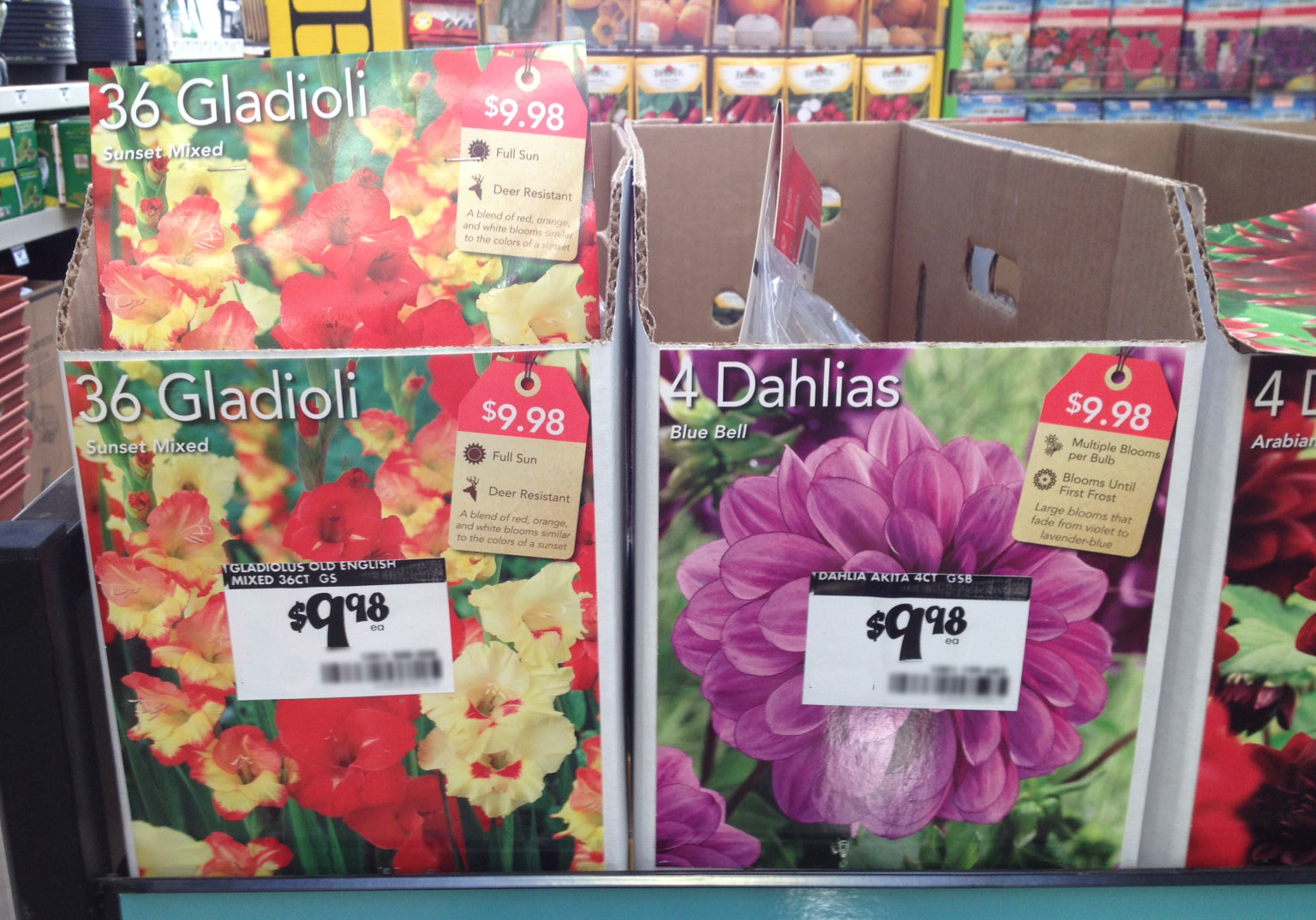
Canna Lilies are another spring planted “bulb” that bring an air of the tropics to your landscape. These flowering plants are often used in annual pots, providing tall, colorful focal points in the center surrounded by lower annuals. Cannas are native to Latin America and are grown as annuals in Denver’s hardiness zone of 5. But if you find the right micro-climate, they may over-winter just fine. I know of one house in Denver, where cannas are planted at the base of a south facing wall on a house, and have become perennial in this residential landscape due to this warm micro-climate spot. Cannas are not true bulbs, but are “rhizomatous.” A rhizome is an underground horizontal stem that can send out shoots and roots from nodes. A ginger “root” is an example of a rhizome that you’ll find in a produce section. Cannas are closely related to ginger and also bananas! Another familiar rhizomatous plant are irises, which have above ground rhizomes. Although canna lilies are often available as potted plants throughout summer, if you purchase them as rhizomes in spring, you get the plants for a fraction of the cost of potted ones. As mentioned previously, cannas develop tropical-like flowers and leaves, giving your patio an island vibe.
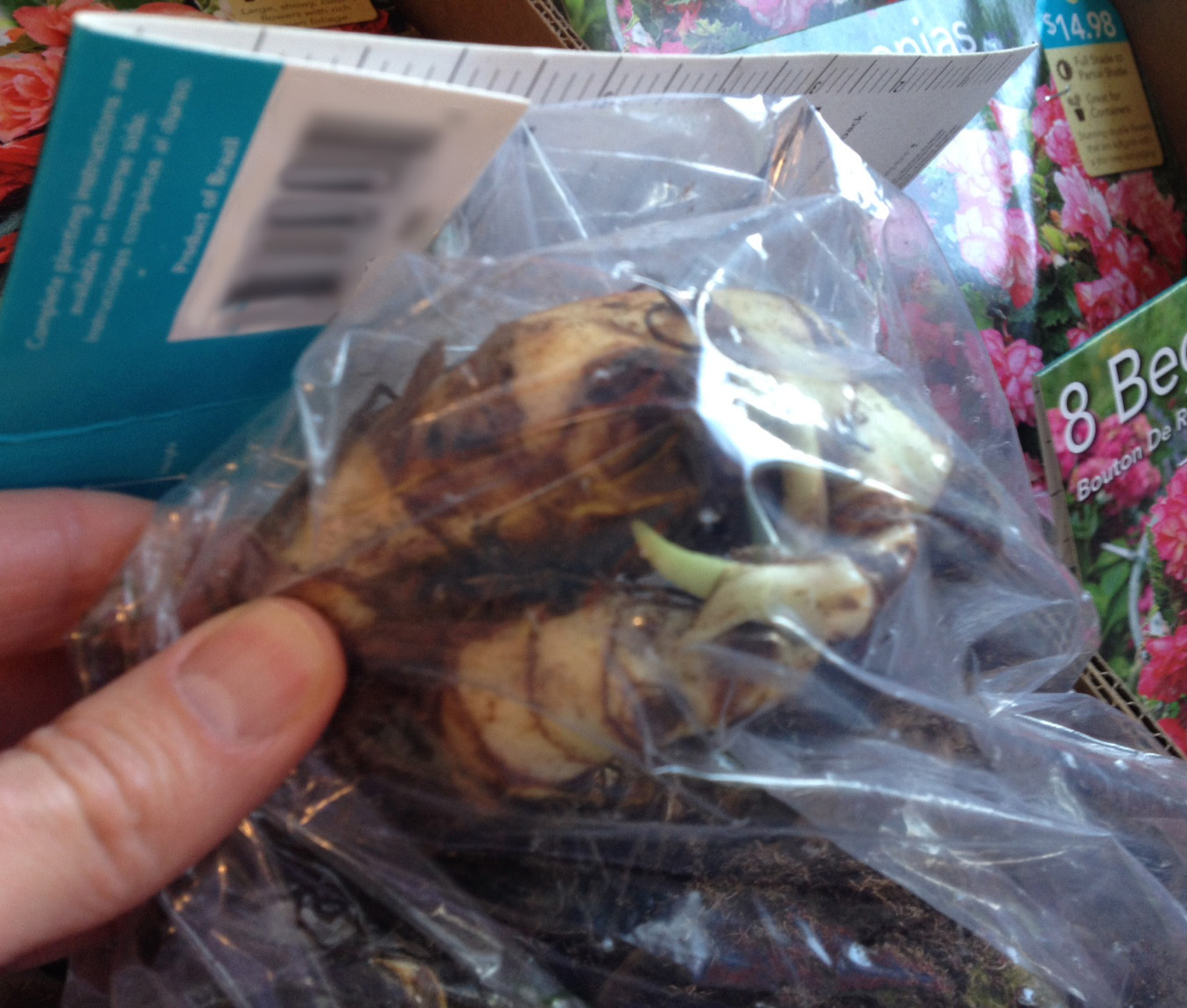
Canna rhizomes.
Head on down to your local garden center this spring gardening season and pick up some spring planted bulbs to brighten your landscape this summer!
This is the official blog of Outdoor Design Group, Colorado Landscape Architects. For more information about our business and our services, click here.
Related Posts:
by Todd Rutherford
A visit to the Denver Botanic Gardens has revealed that the first signs of spring are making their presence known. As we have been experiencing a recent warm spell here in the Denver area, I decided to check out the Gardens to see what might be blooming. Sure enough, there were many bulbs and some shrubs that were taking advantage of the balmy weather to burst forth in bloom.
Below are just a small sampling of what’s flowering now at the Gardens:
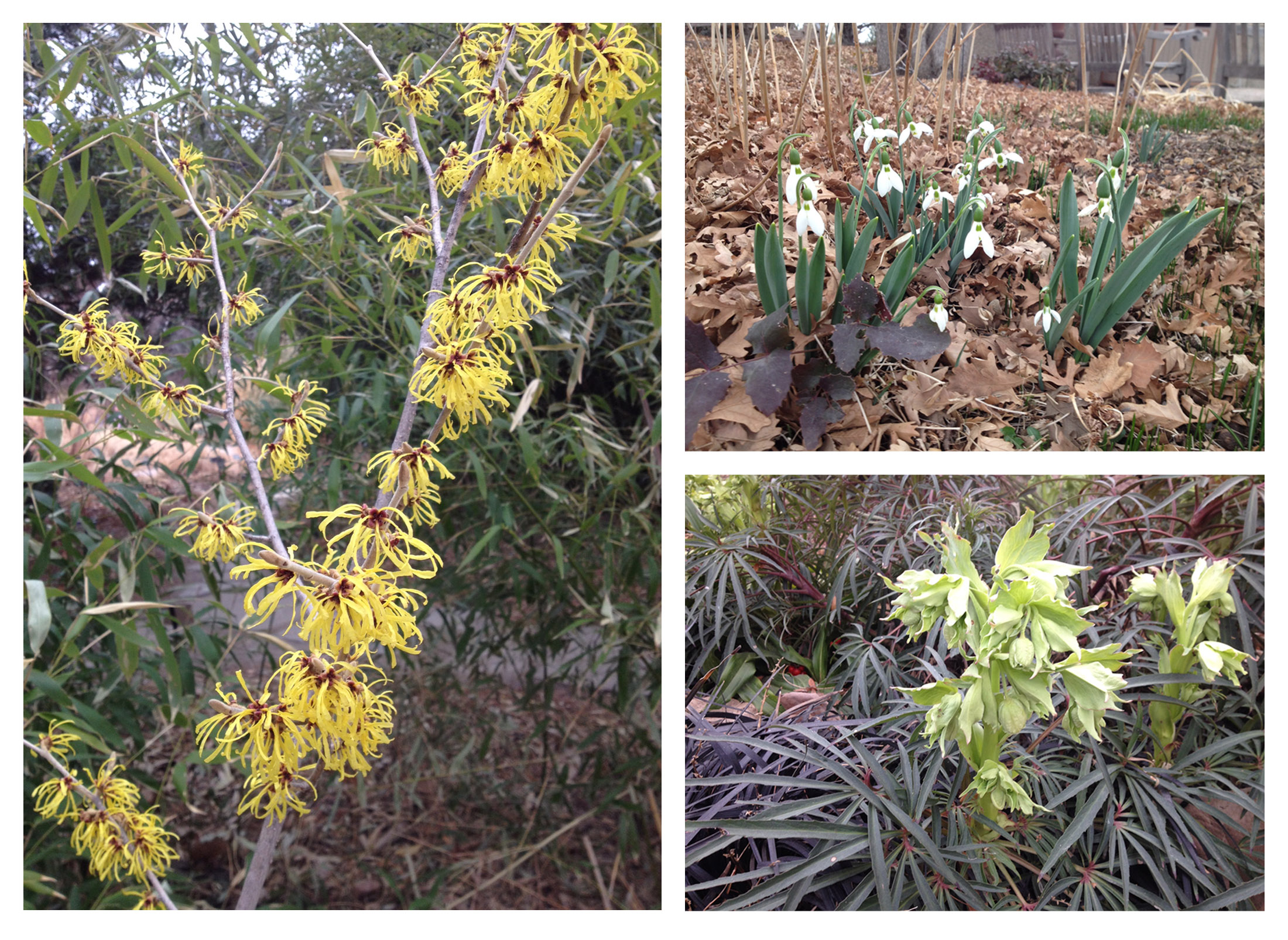
Clockwise from left: Witchhazel; Snowdrops; Hellebores
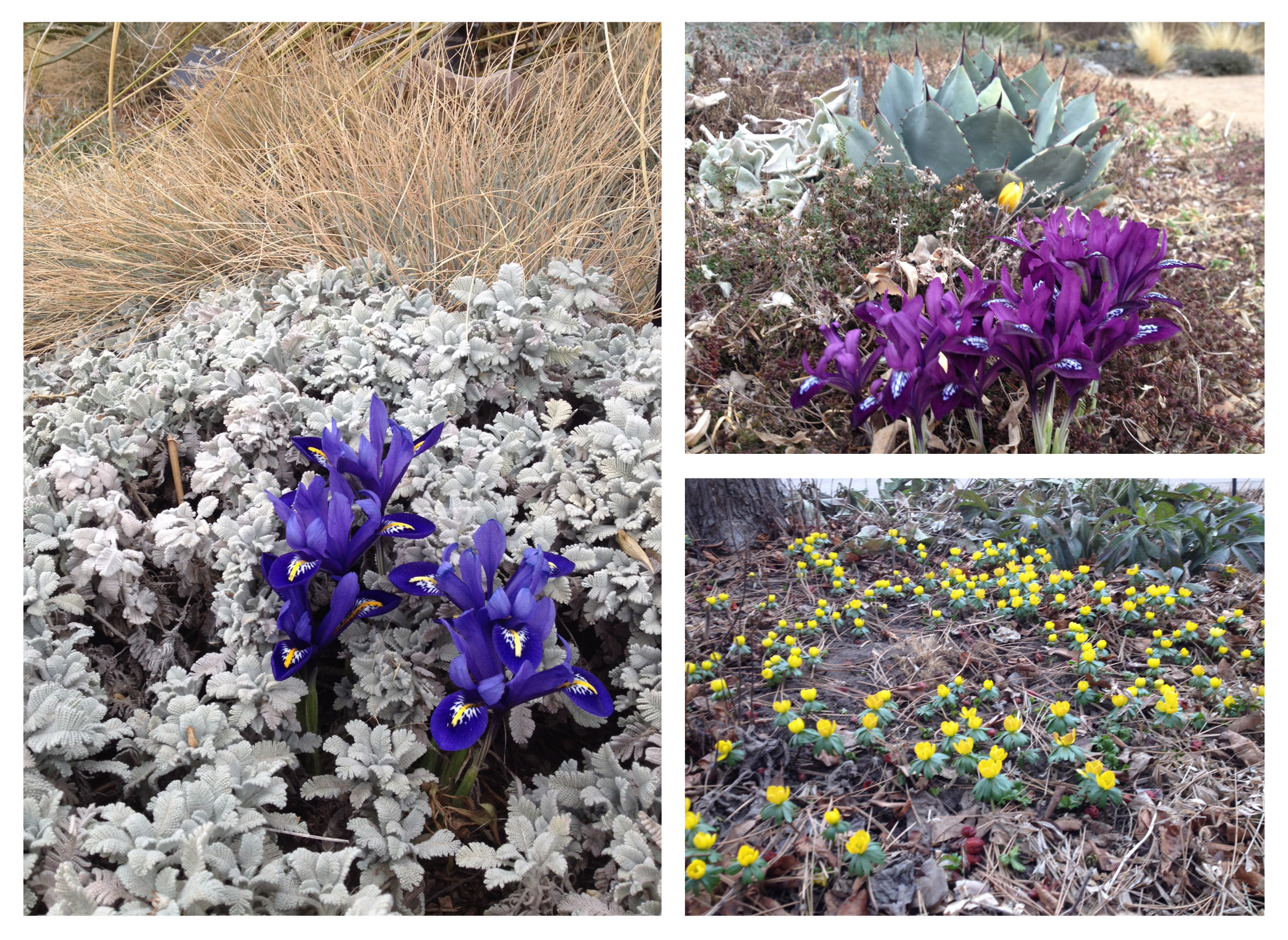
Clockwise from left: Dwarf Iris in Partridge Feather; Dwarf Iris with Crocus and Agave; Winter Aconite
This is the official blog of Outdoor Design Group, Colorado Landscape Architects. For more information about our business and our services, click here.
Related Posts:













